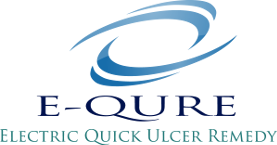The BST Device Benefits
E-QURE's BST Device - Practical & Clinical Benefits
The BST Device intended use - treatment of chronic non-healing wounds such as:
- Diabetic Wounds
- Vascular (Arterial or Venous) Leg Ulcers
- Pressure (Decubitus) Wounds
- Other Ulcers / Wounds, which are resistance to standard or more complex treatments
E-QURE's BST Device demonstrates Well-Established Practical & Clinical Benefits
The BST Device offers a proven non-invasive electrotherapy option for the acceleration of healing and rapid closure of chronic wounds.
- The BST Device is clinically approved for hospitals, clinics and home care
- The BST Device is used only for 90 minutes a day.
- The BST Device is easily applied by the caregiver or patient.
- The BST Device facilitates complete closure of hard-to-heal wounds (which are resistant to standard or advanced wound care within the average period of 6 to 8 weeks1
- The BST Device is the only clinical available electrotherapy which is based on a novel bioelectrical signal discovered in humans.
- The BST Device is the only clinical available electrotherapy with proven therapeutic effectiveness in a Randomized Placebo Controlled Trial – RCT2
- The BST Device significantly reduces the hospitalization period and treatment costs of non-healing chronic wounds.
The BST Device triggers a wound healing process which has the following effects:
- Wound Healing - Initiation and acceleration of the wound healing process.
- Pain - Reduction of local pain.Tissue viability - Significant increase in:
- Granulation -Regeneration of viable connective tissue.
- Epithelialisation -Regeneration of viable epithelial tissue.
- Vascularisation (angiogenesis) - Regeneration of vital blood vessels.
References
- Ricci, E., Afargan, M. The effect of stochastic electrical noise on hard-to-heal wounds. J Wound Care, 2010; 19 (3):96-103.
- Ohry, A., Goren, O. The effects of BST DEVICE electrostimulation on healing of pressure ulcers: results of a multi-center, double blind, 1. randomized, placebo controlled study. EWMA J 2007; 7: oral aBST Deviceract no. 66.
